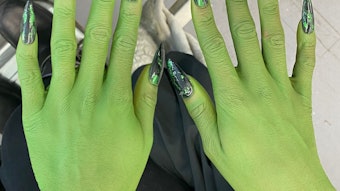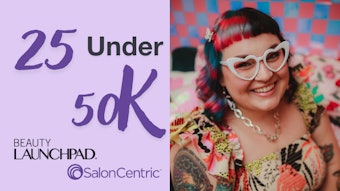
workforce, warns Gabe Ormando, sales director of Shortcuts Software. But are you ready?
We are seeing the Baby Boomers move on and the Millennials move mainstream, but before you relax and stop worrying about the yawning gaps between the generations, we’ve got some news for you. Schmoo Millennials, hello iGens. Yup, there is a new word for those born post-millennium, and how we react to them in-salon is going to lead to as many changes as those accompanying the advent of the Millennials.
These young people, also referred to as Gen Z, are just finishing off high school and entering the workforce, and they are apparently even more different to pre-Millennials (Baby Boomers, Gen X’ers, and X’ennials) than Millennials (Gen Y) are.
According to psychologist Professor Jean M Twenge of San Diego State University, iGens are growing up even more connected. Millennials matured with the web, but it wasn’t the ever-present phenomenon it is today. They were long out of diapers by the time Facebook came along, and well-entrenched in the workplace when Instagram was launched. In contrast, iGen is a generation shaped by the smartphone and constant connectivity. They prefer sitting in their room on their phone than going to the mall with pals. They break out in a cold sweat at the prospect of pressing a doorbell, not knowing who will answer, and they are going out on fewer dates – now that’s worrying. Constant connectivity appears to be curtailing development of those very real social skills needed to deal with clients in-salon
Even more than Millennials, iGens won’t talk on the phone. They book online at a time that suits them – probably about 2am – and they’d roll their eyes, labelling you a dinosaur if you made them wait even a heartbeat while taking a booking over the phone. They expect instant attention the minute they walk in the door, because they assume everyone else is digitally organizing their lives as they do.
But the curse of the smartphone generation is their chronic, unassailable loneliness. A third of 8th, 10th and 12-graders reported often feeling ‘left out of things’ or ‘feeling lonely’, according to one recent survey. This is driving them to seek more external relationships and, as they get older, they will look for a link with their salon community. Used to chatting to their pals at any time of the day, they expect the same from their bestie at the salon, making social media engagement a must for every salon.
But iGens won’t just be clients; they are also the upcoming talent soon to trickle on to the salon floor. They’ll continue the trend set by Millennials for business transparency and involvement, which, enabled and encouraged by the salon owner/manager, can boost business. Millennials and iGens are motivated by a sense of ownership, keen to know how their activity affects their (and the salon’s) business. If they can follow their column on their smartphone using the Shortcuts Anywhere function, which they’ll love, it will also free up the huddle around reception when clients arrive or pay; even better if they can set up the next appointment on their smartphone while the client is still in the chair.
Technology is already the most important aspect of an iGen’s life and embarking on a career that sees them standing behind a chair chatting with clients all day won’t dampen that. They harness it and use it to their advantage.
About Gabe Ormando
Gabe has been in the salon and spa business for over 18 years, with the last 11 working for Shortcuts Software, provider of intuitive technology solutions to over 14,000 clients in the hair and grooming industries worldwide. As well as their stylish point of sale systems, Shortcuts sets itself apart by offering a complete online marketing solution built in to the system, and personalized client support 24/7. Constantly evolving to meet the changing needs of the market, Shortcuts is powered by the largest research and development team in the industry. Founded in 1994, Shortcuts technologies are now used in 45 countries around the globe.
[Image: Getty Images]











